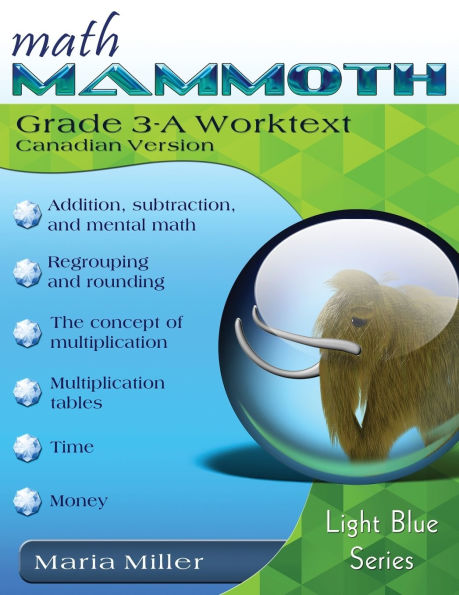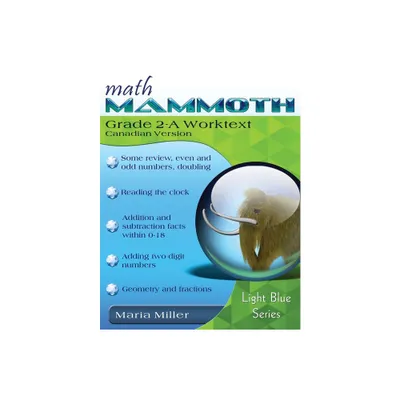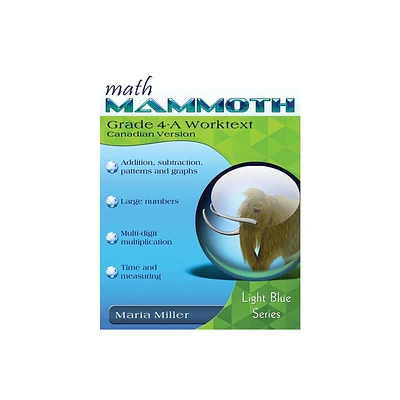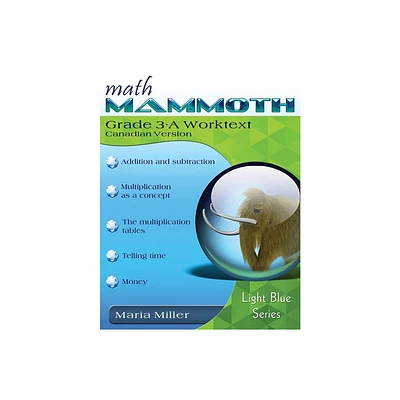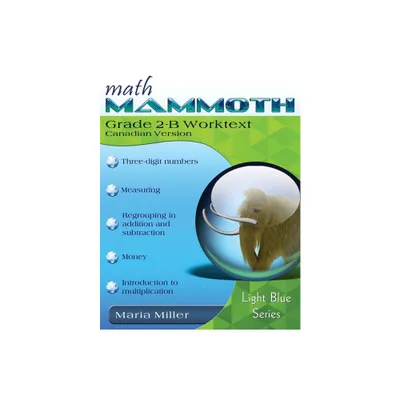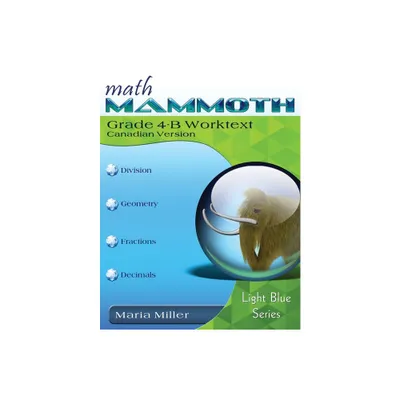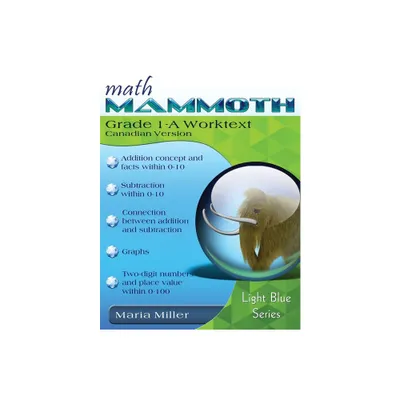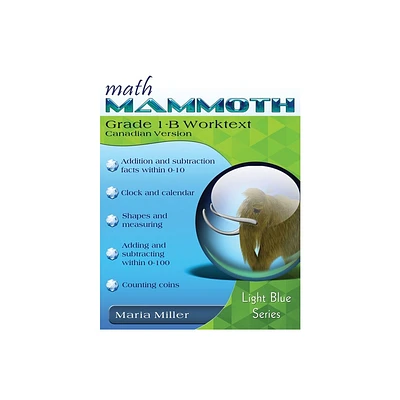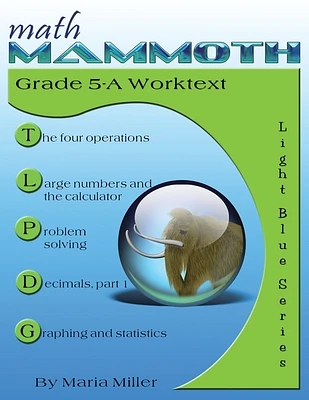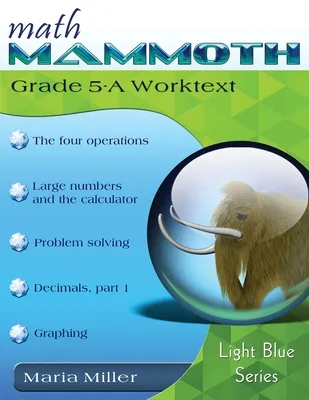Home
Math Mammoth Grade 5-A Worktext, Canadian Version
Loading Inventory...
Barnes and Noble
Math Mammoth Grade 5-A Worktext, Canadian Version
Current price: $27.95
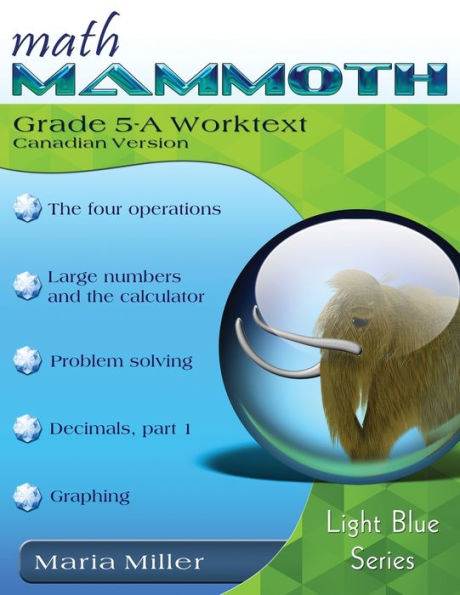

Barnes and Noble
Math Mammoth Grade 5-A Worktext, Canadian Version
Current price: $27.95
Loading Inventory...
Size: OS
*Product Information may vary - to confirm product availability, pricing, and additional information please contact Barnes and Noble
Math Mammoth Grade 5-A Worktext (Canadian version)
is the student book for the first half of grade 5, and part of the Math Mammoth Grade 5 complete curriculum. This is the Canadian version, which means the materials use mostly metric units, it is formatted to letter size, and large numbers are formatted with a space (e.g. 214 000). However, keep in mind that the "Grade 5" refers to the U.S. grade 5, and corresponds roughly to Canadian school system's year 6.
The main areas of study in Math Mammoth Grade 5-A worktext are
the four operations
with whole numbers,
place value
with large numbers and the judicious use of calculator,
problem solving
& simple equations,
decimal arithmetic
(operations with decimals), and graphing.
The year starts out with a study of whole numbers and their operations. Students get to review multi-digit multiplication and learn long division with two-digit divisors. We also review divisibility and factors from fourth grade, and study prime factorization.
In the second chapter, the focus is on large numbers and using a calculator. This is the first time a calculator is introduced in Math Mammoth complete curriculum-thus far, all calculations have been done mentally or with paper and pencil. I want students to learn to be critical in their use of the calculator and use it with good judgment. Every exercise where calculator use is to be allowed is marked with a little calculator symbol.
The third chapter is about equations and problem solving. We study simple equations with the help of a balance and bar models. The main idea is to get students used to the idea of an equation and what it means to solve an equation. Students also do a fair amount of problem solving using the visual bar model.
The fourth chapter is about decimals and some of the operations with decimals (the rest will be studied in part 5-B). In this chapter, we focus on place value with decimals, addition and subtraction of decimals and multiplication and division of decimals by whole numbers. In chapter 5 we study graphing in the coordinate grid, line graphs, and the concept of average.
Please note this is the student worktext and does not contain the answers. The answer key book is available separately
is the student book for the first half of grade 5, and part of the Math Mammoth Grade 5 complete curriculum. This is the Canadian version, which means the materials use mostly metric units, it is formatted to letter size, and large numbers are formatted with a space (e.g. 214 000). However, keep in mind that the "Grade 5" refers to the U.S. grade 5, and corresponds roughly to Canadian school system's year 6.
The main areas of study in Math Mammoth Grade 5-A worktext are
the four operations
with whole numbers,
place value
with large numbers and the judicious use of calculator,
problem solving
& simple equations,
decimal arithmetic
(operations with decimals), and graphing.
The year starts out with a study of whole numbers and their operations. Students get to review multi-digit multiplication and learn long division with two-digit divisors. We also review divisibility and factors from fourth grade, and study prime factorization.
In the second chapter, the focus is on large numbers and using a calculator. This is the first time a calculator is introduced in Math Mammoth complete curriculum-thus far, all calculations have been done mentally or with paper and pencil. I want students to learn to be critical in their use of the calculator and use it with good judgment. Every exercise where calculator use is to be allowed is marked with a little calculator symbol.
The third chapter is about equations and problem solving. We study simple equations with the help of a balance and bar models. The main idea is to get students used to the idea of an equation and what it means to solve an equation. Students also do a fair amount of problem solving using the visual bar model.
The fourth chapter is about decimals and some of the operations with decimals (the rest will be studied in part 5-B). In this chapter, we focus on place value with decimals, addition and subtraction of decimals and multiplication and division of decimals by whole numbers. In chapter 5 we study graphing in the coordinate grid, line graphs, and the concept of average.
Please note this is the student worktext and does not contain the answers. The answer key book is available separately
